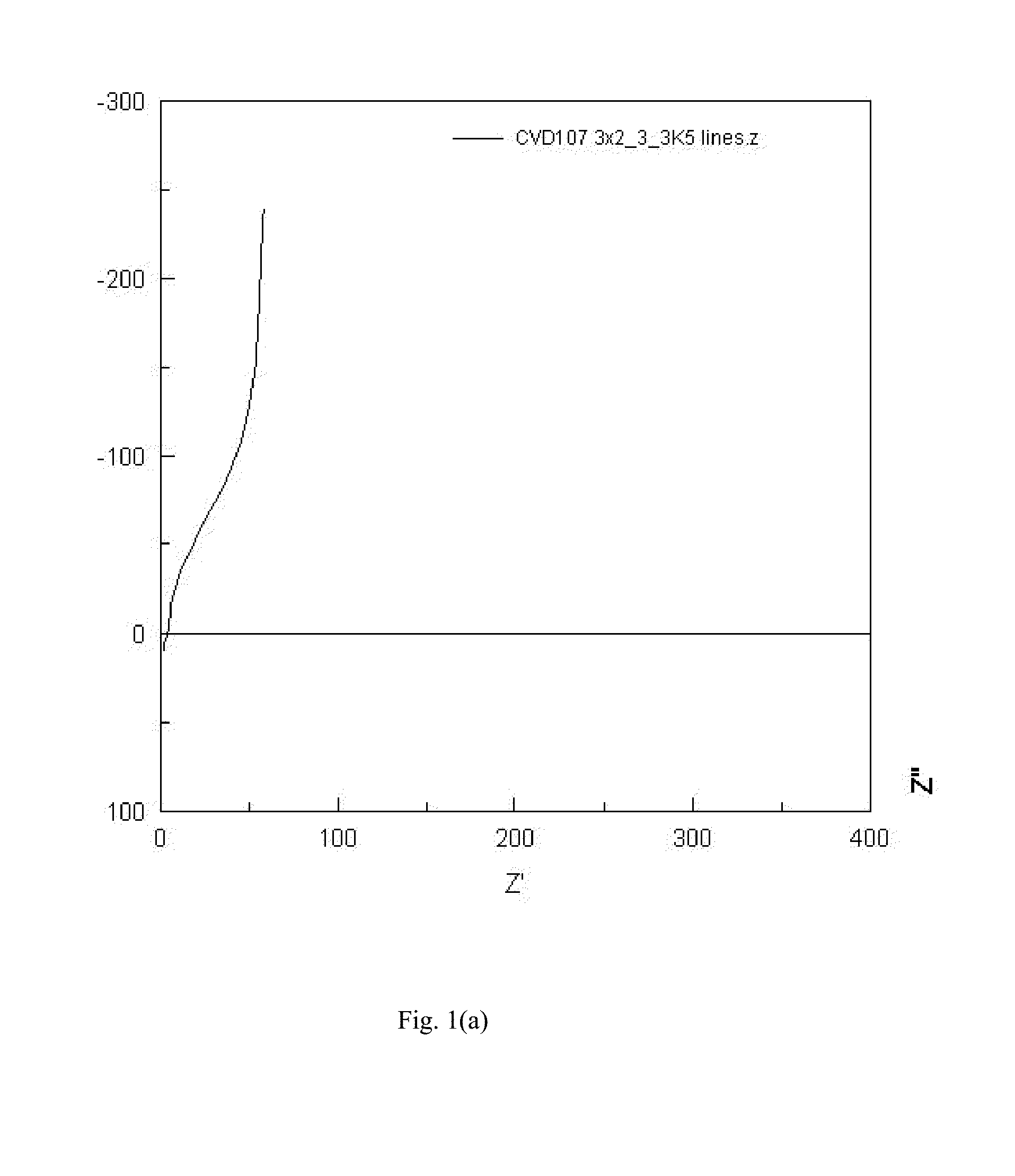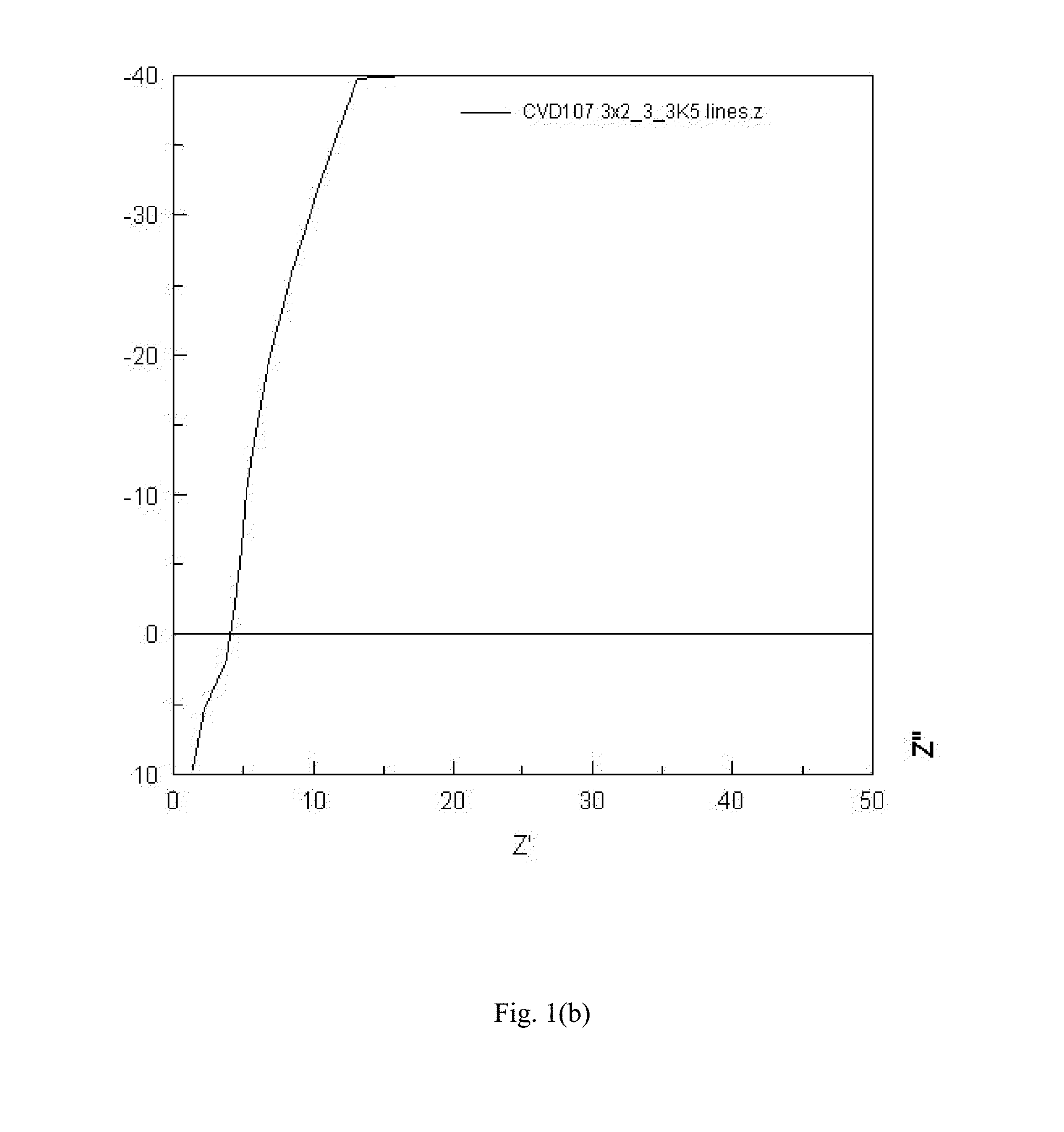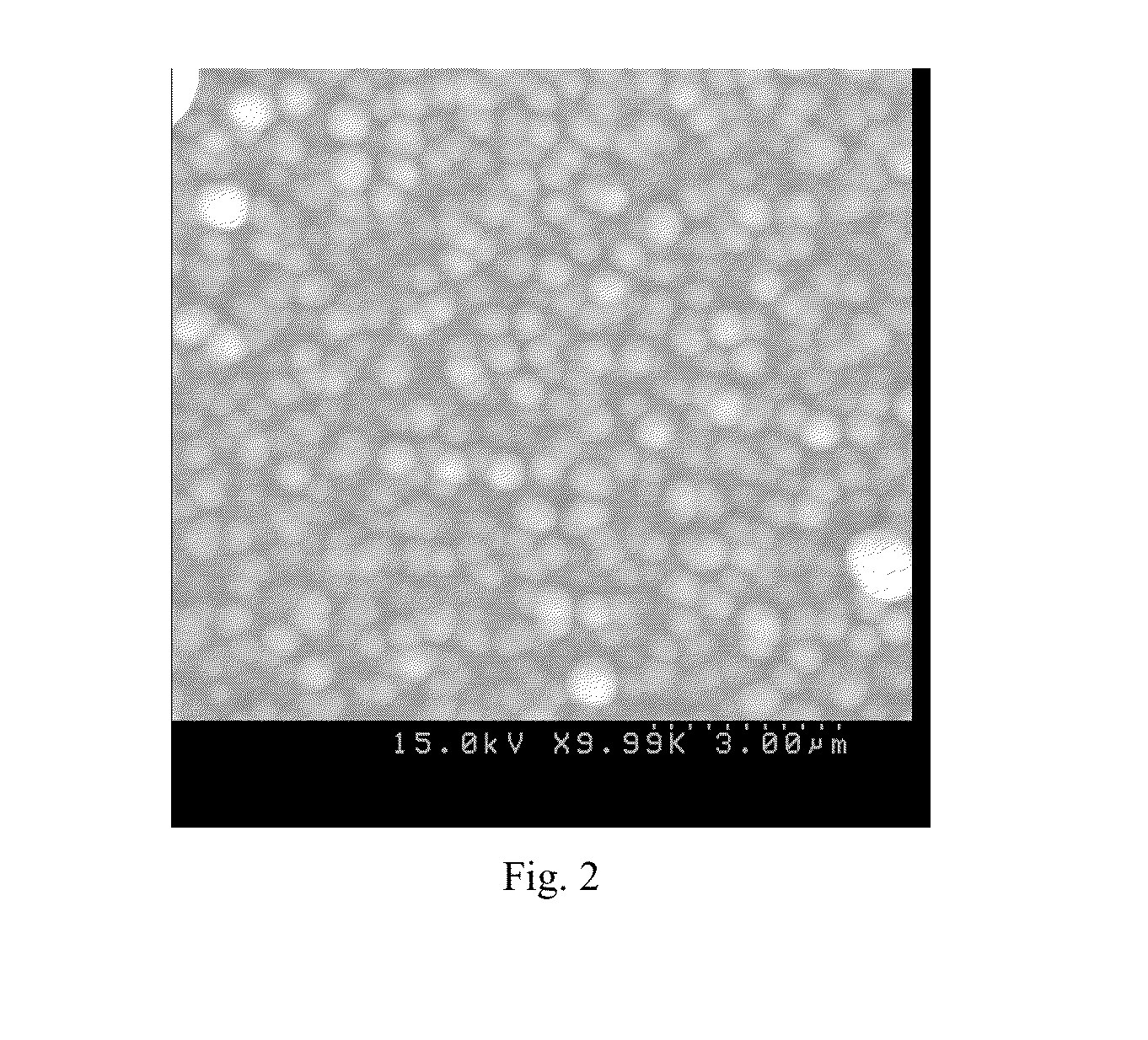Amorphous ionically-conductive metal oxides, method of preparation, and battery
a metal oxide and ion-conductive technology, applied in the field of forming an amorphous ion-conductive metal oxide, can solve the problems of lithium as an anode material, irreversible battery capacity loss, and diminished performance over time and safety issues
- Summary
- Abstract
- Description
- Claims
- Application Information
AI Technical Summary
Benefits of technology
Problems solved by technology
Method used
Image
Examples
example 1
Preparation and Analysis of LLZO Film Using APCVD
LLZO Film Preparation
[0057]A precursor solution for LLZO was prepared by dissolving at room temperature 0.5 grams of lithium acetylacetonate, 0.58 grams of lanthanum nitrate La(No3)3xH2O and 0.33 grams of zirconium acetylacetonate in 240 mL of ethanol, commercially available from Strem Chemicals and Sigma Aldrich. The amount of metal precursors corresponds to a molar ratio of lithium to lanthanum to zirconium of 7:2:1. An ultrasonic nebulizer was used to generate an aerosol mist of the precursor solution and a carrier gas (nitrogen) transported the aerosol mist to the substrate. In the aerosol, the liquid droplet size distribution was in the range of 5-20 μm, leading to easy evaporation of the droplets before they reached the substrate surface. A reactant gas (oxygen) was introduced to the deposition chamber separate from the mist. Glass substrates, aluminum foil, and cathodes were used as substrates, which were heated to about 270 to...
example 2
Preparation and Analysis of Amorphous LLZO by APCVD with Partial Substitution by Tantalum
[0065]An amorphous LLZO film with partial tantalum substitution was prepared by mixing 0.53 grams of lithium acetylacetonate (LiAcac), 0.62 grams of hydrated lanthanum nitrate La(NO3)3xH2O (LaNO), 0.28 grams of zirconium acetylacetonate (ZrAcac) and 0.08 grams of tantalum n-butoxide in 240 ml of ethanol solvent to form a precursor solution. All solution components are commercially available from Strem Chemicals, Sigma Aldrich, and Gelest. An ultrasonic nebulizer was used to generate an aerosol mist of the precursor solution and a carrier gas (nitrogen) was used to transport the mist into the deposition chamber and onto the substrate (glass with sputtered Al bars). A reactant gas (oxygen) was introduced to the deposition chamber separately from the mist. The substrate was heated to about 320° C., facilitating decomposition of the precursors and film deposition on the hot substrate. The deposition...
example 3
Preparation and Analysis of Amorphous LLZO by APCVD with Partial Substitution by Niobium
[0067]A sample of amorphous LLZO with partial substitution by niobium was prepared as described in Example 2, with the exception of the precursor solution. The metal precursor solution contained 0.53 grams of LiAcac, 0.62 grams of LaNO, 0.27 grams of ZrAcac and 0.07 grams of niobium n-butoxide in 240 mL of ethanol. All solution components are commercially available from Strem Chemicals, Sigma Aldrich, and Gelest. The Nyquist plot was similar to the Nyquist plot for Example 2, indicating pure ionic conduction and leading to an ionic conductivity estimate of 6.8E-4 S / cm.
PUM
| Property | Measurement | Unit |
|---|---|---|
| temperature | aaaaa | aaaaa |
| ionic conductivity | aaaaa | aaaaa |
| ionic conductivity | aaaaa | aaaaa |
Abstract
Description
Claims
Application Information
 Login to View More
Login to View More - R&D
- Intellectual Property
- Life Sciences
- Materials
- Tech Scout
- Unparalleled Data Quality
- Higher Quality Content
- 60% Fewer Hallucinations
Browse by: Latest US Patents, China's latest patents, Technical Efficacy Thesaurus, Application Domain, Technology Topic, Popular Technical Reports.
© 2025 PatSnap. All rights reserved.Legal|Privacy policy|Modern Slavery Act Transparency Statement|Sitemap|About US| Contact US: help@patsnap.com



